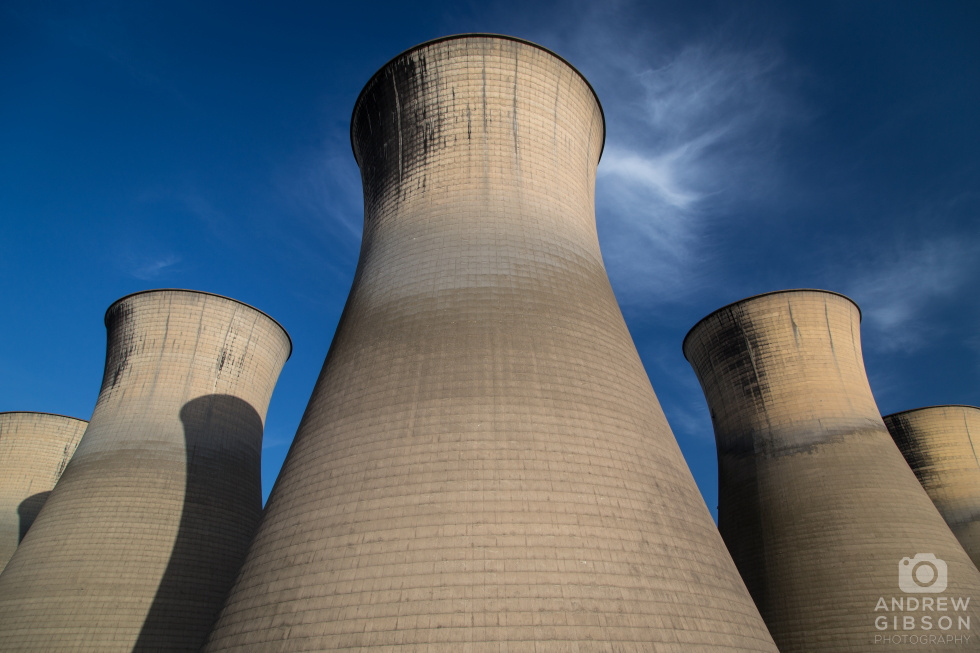There’s just something quite mesmerising about cooling towers – that most living, breathing and most iconic embodiment of industrial power. But they are an icon fast fading from the British countryside as power generation evolves with the technology of the day and these giant reflections of post war consumerism become consigned to the history books.
I first visited Willington in August 2012, the day after paying a final visit to Thorpe Marsh Power Station before it was reduced to a twisted heap of reinforced steel and concrete, destined to be forever hidden, ballast beneath the next nondescript post-modern building project. Thorpe Marsh had a quality all of its own that Willington frankly didn’t, and even mid demolition it was awe inspiring. Almost two years later though enough time had passed for me to be able to appreciate Derbyshire’s finest in their own right.
As soon as those magnificent towers loomed into view I felt the excitement build; a ‘V’ formation of five sitting silently in the fields adjacent to a sleepy town that lent them their name, their brutalist geometry exposed and detached from the long demolished turbine halls. Proximity to extensive coal seams and the River Trent had been the winning combination that saw Willington’s rise, as had been the case with any number of other small towns that emerged from relative obscurity to become landmarks as a result of their industrial prowess and the ever increasing demand for electricity. It was once suggested that Trent water passed through the cooling systems of twelve power stations before it reached the North Sea, raising the temperature and providing a paradise for fishermen in the process.
As with many of its kind Willington was in fact two independent generating entities separately commissioned in 1957 and 1962. An era defining and iconic sight they may be, but these giant powerhouses were only ever designed to have an operating life of 30-40 years, and following the privatisation of the industry in 1989 many were decommissioned – Willington A was disconnected from the grid in 1994 while the B station was run into the ground, just missing out on seeing the millennium in.
The towers are all that remains, but for how long nobody knows. With the prospect of a new ‘C’ station being developed on the site they could easily be wiped from the land while nobody’s looking, following in the dust clouds of Thorpe Marsh, Richborough and High Marnham that all disappeared in 2012. And there really is nowhere quite like an abandoned power station for an afternoon’s chilling out in the sunshine.
Catch them while you can.
